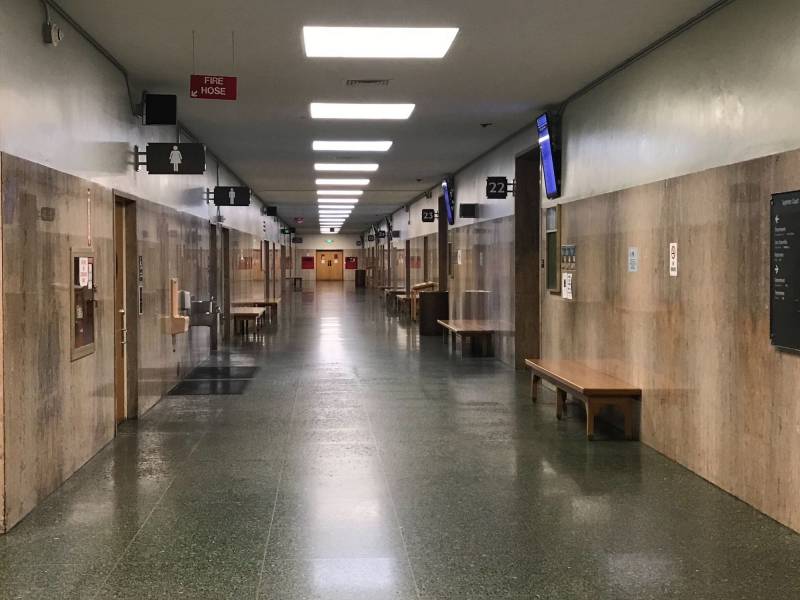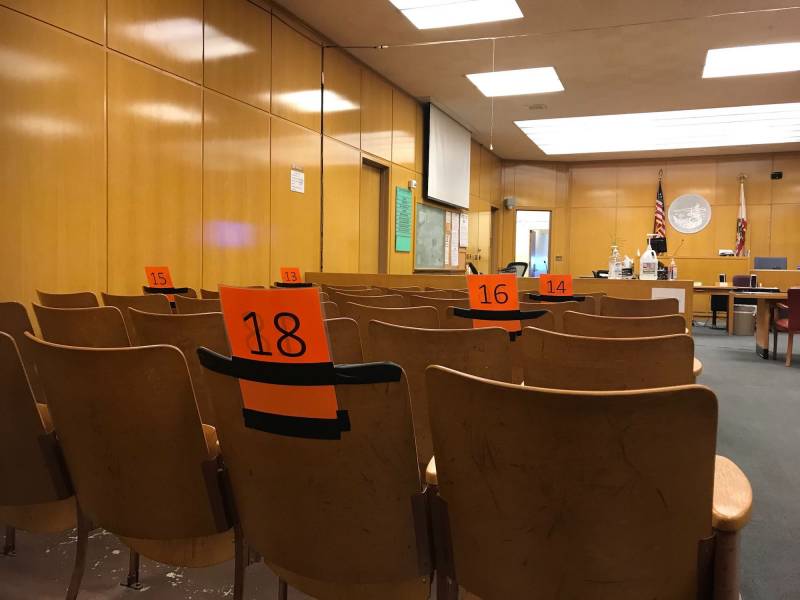Barlow says some interesting moments occurred when witnesses wore masks with clear plastic over their mouths, so the jury could see their expressions. He said they were “moderately effective, but they tended to fog up when people were talking.”
Would he serve again? “Yeah,” says Barlow.“I think even in these strange times, I definitely would do it again. And I kind of came away with that feeling like enough precautions had been taken, and that it was worth it just to make sure that our justice system is still working.”
The Experts
Even with all the precautions in place, jury duty doesn’t come with a guarantee against COVID-19.
“People have to understand that it’s mitigation and it’s not elimination,” says infectious diseases specialist Dr. John Swartzberg, who served as a scientific adviser for the American Board of Trial Advocates’ guide to conducting civil trials during the pandemic. He said the courts are challenged by a lack of funds, but “from everything I can tell, I think they’ve done a good job with what they have.”
Would Swartzberg feel comfortable serving on a jury if called? He says he would serve, but since he is older, he would still feel a bit nervous. He’d want to make sure he had at least 6 feet distance from others, that everyone wore masks, used sanitizer, and one more thing: air exchange. He’d want to know how long it takes to filter and fully refresh all the air in the courtroom. “A lot of the older buildings have like two air exchanges per hour. Whereas in a hospital room, you’d be held to a standard anywhere between eight and 12 exchanges an hour.”
Dr. Dean Winslow, professor of medicine and specialist in infectious diseases at Stanford, agrees. He says it takes a very efficient HVAC system to filter out small particle aerosols that can remain suspended “for up to several hours.” For him, “the most important thing would be limiting even large rooms to no more than about 25 people, even in a fairly large room and requiring, very, very strictly that people wear face masks or appropriate face coverings during that time.” And, he, too, would want to see a high rate of air exchange.
Although the courthouses are mostly older buildings, a quick survey reveals that some (but not all) have upgraded filtration systems, and officials at several of the courthouses in Bay Area counties told me they have been running their air filtration system intakes at 100%.
A spokesman for the Marin County Superior Court said the air exchange rate in the county Superior Court rooms is three-four times per hour. However, the recent fires complicated opening filtration system dampers for maximum air intake, so the courts brought in “air scrubbers,” loud, industrial machines, to clean the inside air.
The Judge
Moving some trial elements online has had some benefits, according to Judge Tara Desautels, presiding judge for the Alameda County Superior Court. With some witnesses testifying via Zoom or other remote means, she says, “Jurors have, in fact, said that they enjoy that opportunity because it enables them to be really upfront and close to the witness as compared to in a pre-COVID jury setting where you would have the 12 jurors on the side of the room in the jury box, depending on where your seat is and your vision abilities.” She says, in addition to the standard mask requirements and distancing, each juror now has their own separate table in deliberation, with personal copies of jury instructions and evidence.
I asked Desautels if fewer people were showing up to serve on juries, or if more were trying to get out of serving. “One of the reasons why we have had to create overflow rooms is because we have had more than our normal, normally expected turnout rate,” she said. “We were very afraid that we would receive no jurors, that no one would be willing to come to our courthouses when we began our jury selection, and we have been very pleasantly surprised.”


